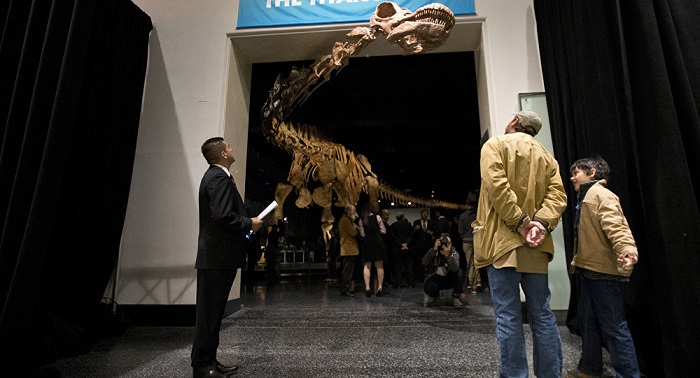University of Toronto vertebrate paleontologist Robert Reisz presented the findings Friday at the Canadian Society of Vertebrate Paleontology`s annual meeting (PDF) in Mississauga, Ontario.
"In popular culture, we imagine dinosaurs as more ferocious-looking, but that is not the case," Reisz said in a news release.
To test the hypothesis that lips covered theropod dinosaurs` teeth when the mouth was closed, Reisz and colleague Derek Larson examined dental anatomy and modern-day reptilian predators, including crocodiles and monitor lizards.
Crocodiles have exposed teeth, much like a "Jurassic Park" predator, while monitor lizards have teeth concealed behind scaly lips, similar to the movie version of velociraptors, he said.
Lips protect teeth enamel from drying out in part by keeping them hydrated, Reisz said.
"We propose that this requirement of hydration is not possible to maintain if the tooth is exposed permanently," he said.
To test their theory they examined tusks, the exposed teeth of terrestrial mammals that don`t have enamel, and compared them with the large teeth of theropod dinosaurs, known to have well-preserved enamel. They concluded that theropod teeth "were not exposed permanently, but covered by reptilian lips" similar to those found on various scaled lizards.
Then why do crocodiles, the closer relatives to dinosaurs, have exposed teeth? One might think crocodiles would be the logical choice for comparing teeth, "except that they are aquatic, while dinosaurs are mostly terrestrial," Reisz said.
In other words, crocodiles spend their time submerged in water and don`t need lips for hydration protection.
"Thus, the comparison is flawed," Reisz said in an email. "Their teeth are kept hydrated by an aquatic environment."
On the other hand, reptiles with lips, such as monitor lizards, typically live on land where their teeth require different protection. From this, Reisz concludes that dinosaur teeth would likely have been covered by scaly lips.
Besides, movie versions of most other dinosaurs, including velociraptors, have teeth covered by scaly lips, Reisz pointed out.
While the research is ongoing, he has a theory for why we insist on toothy grins for T-rexes: To match "their impressive size."
More about:
















































